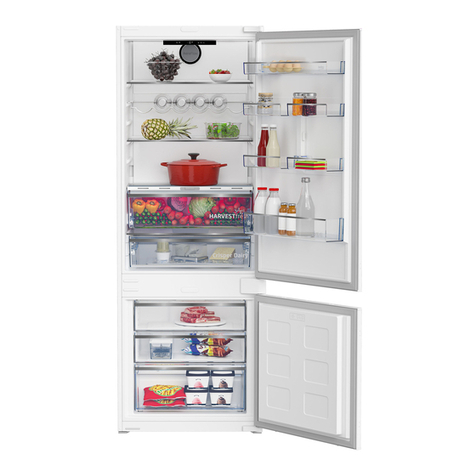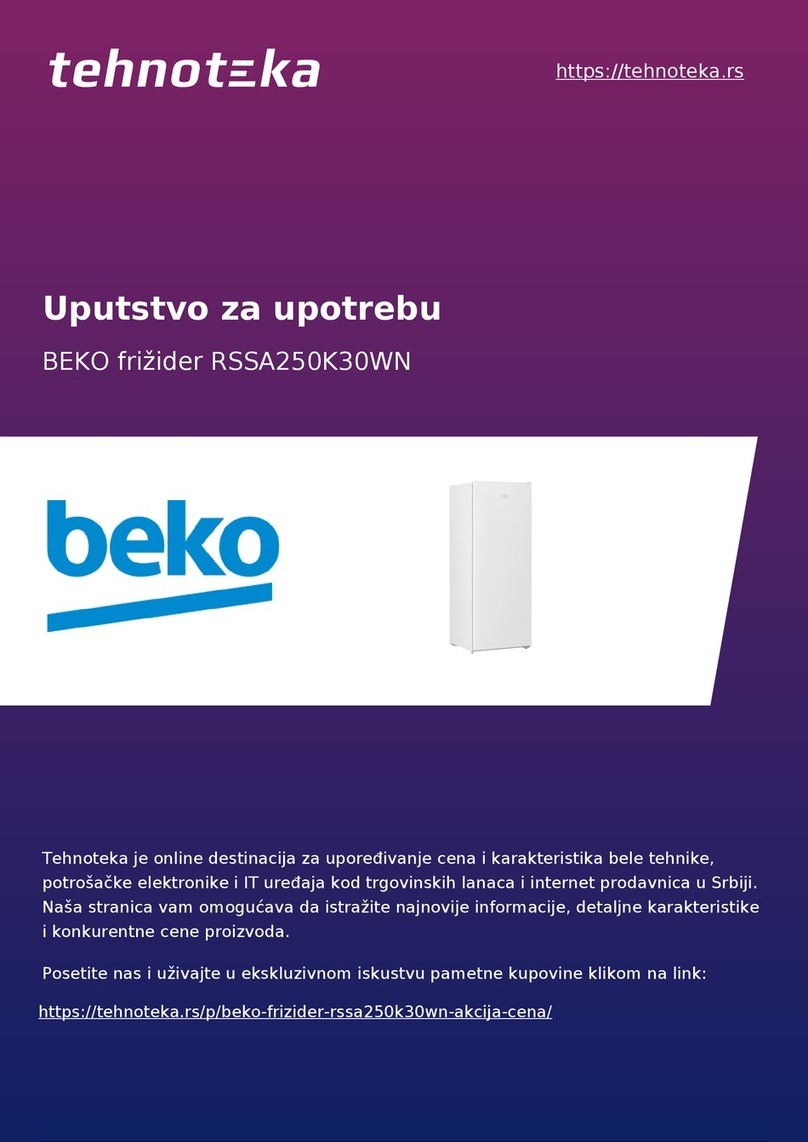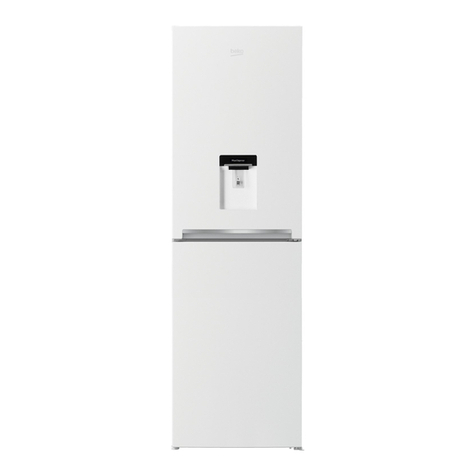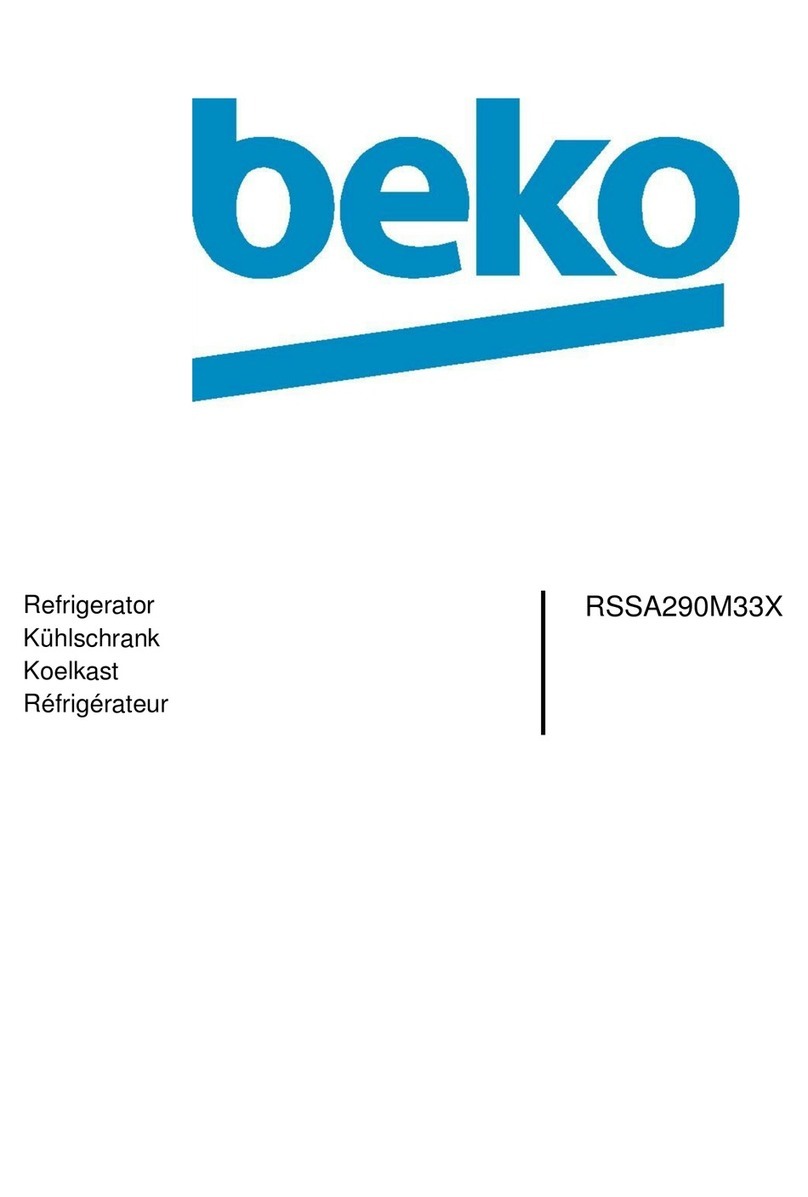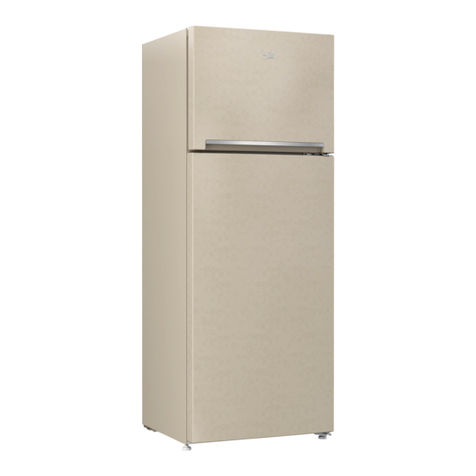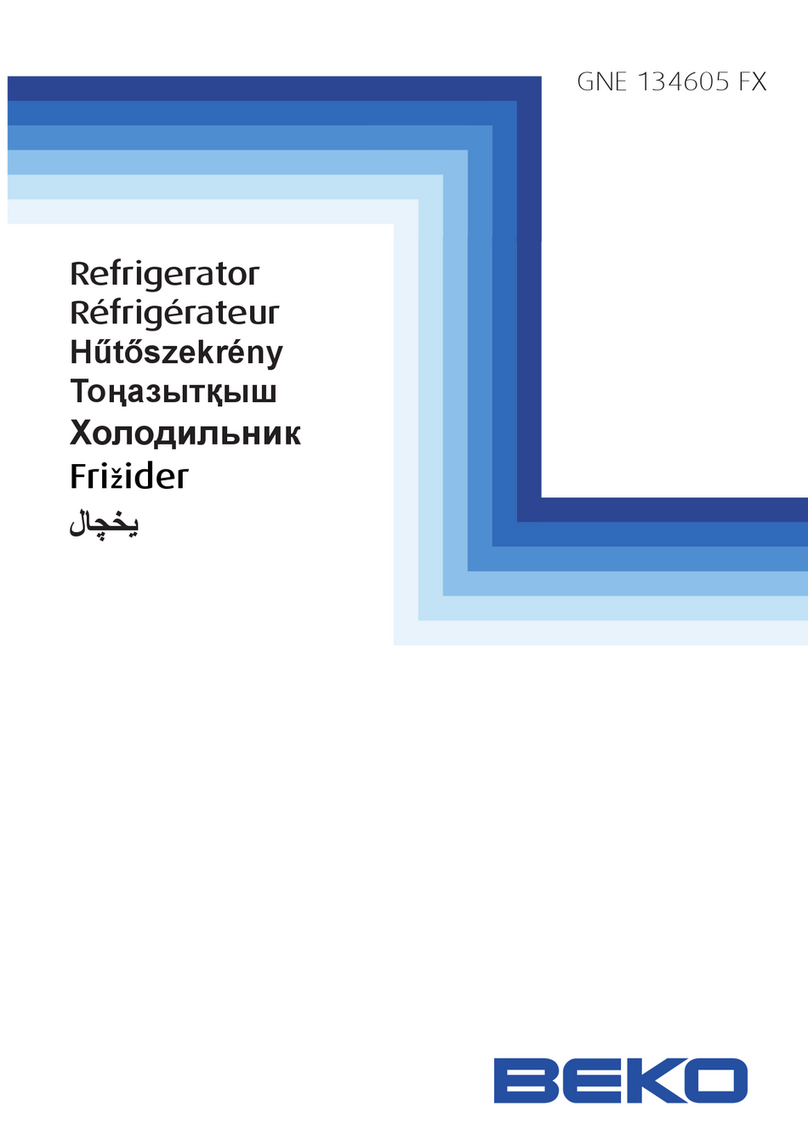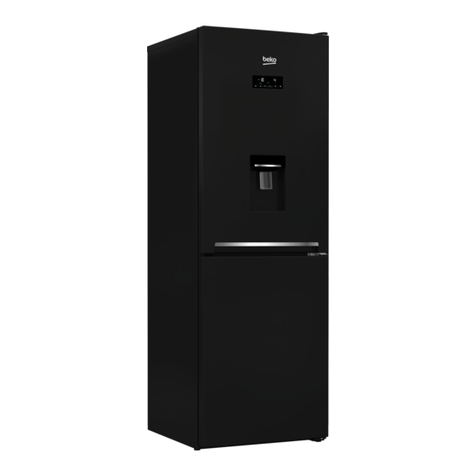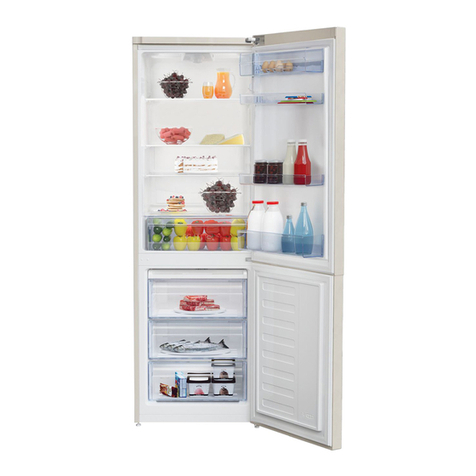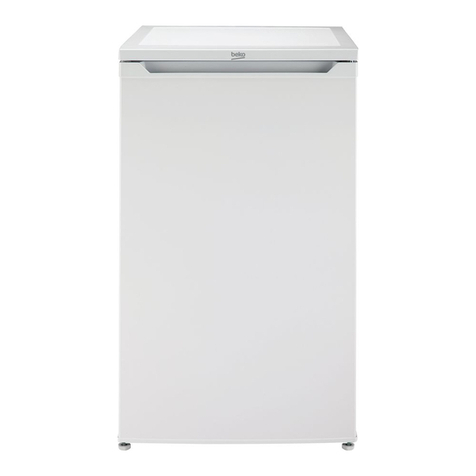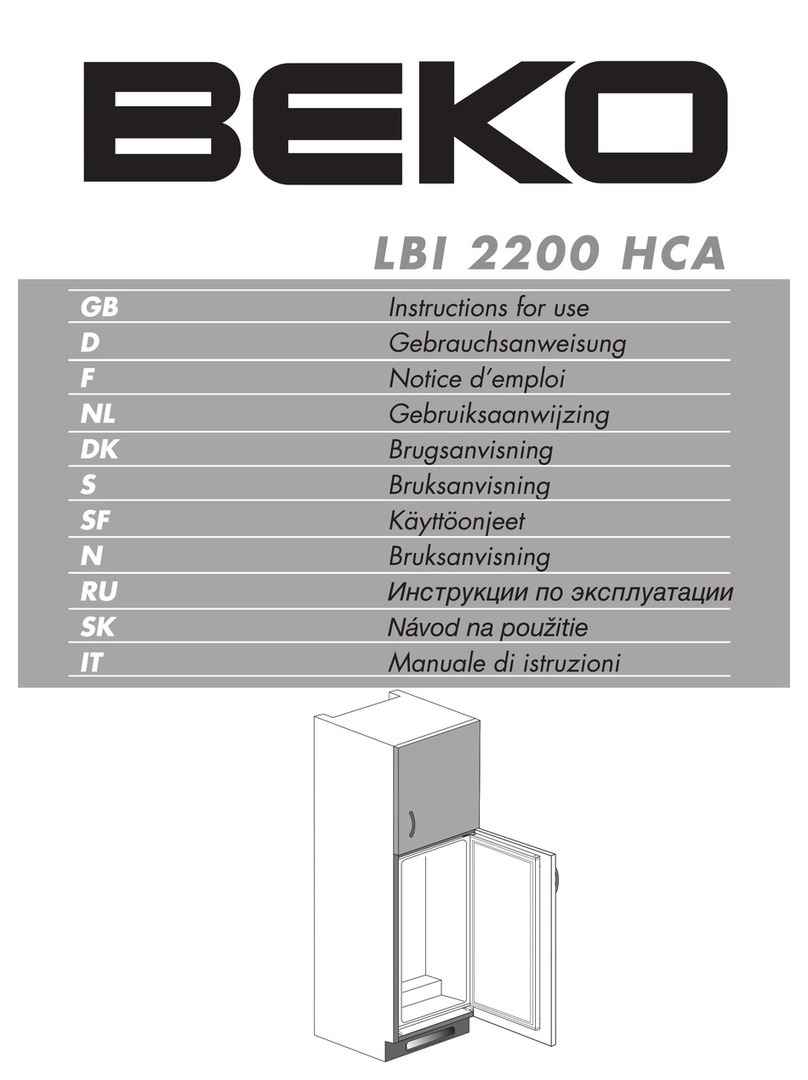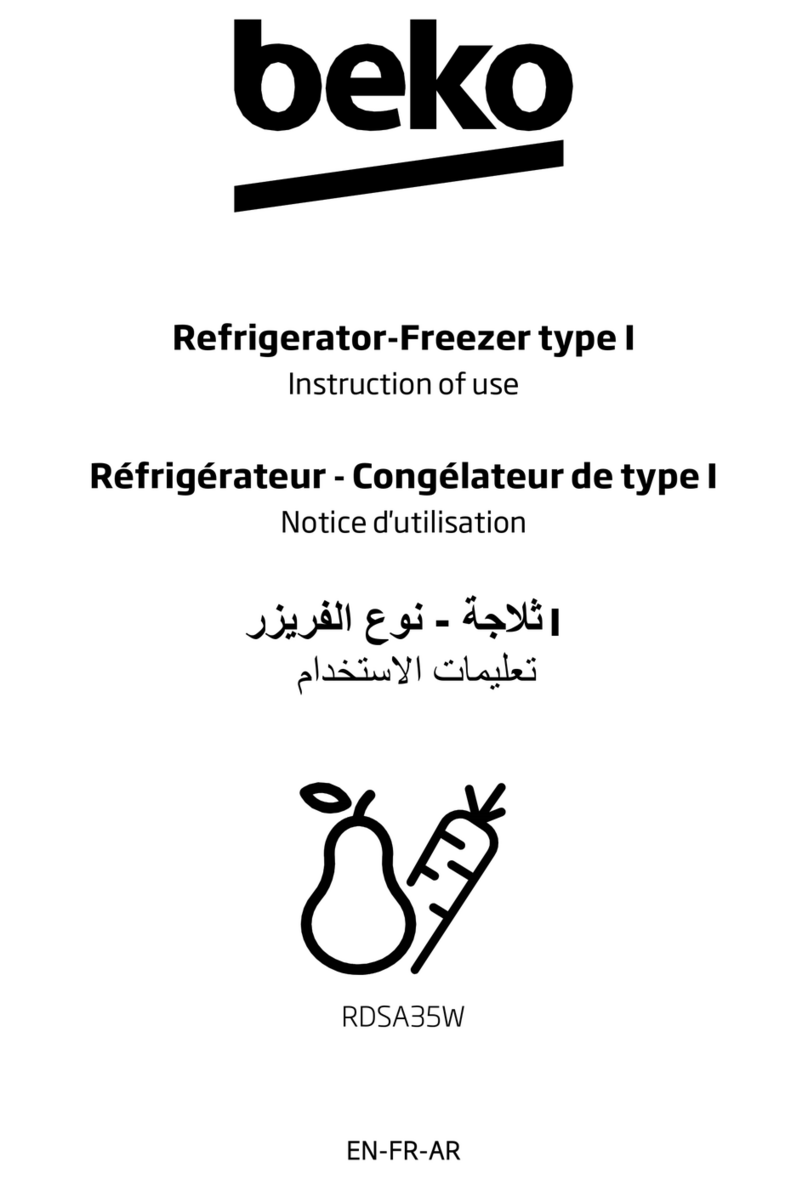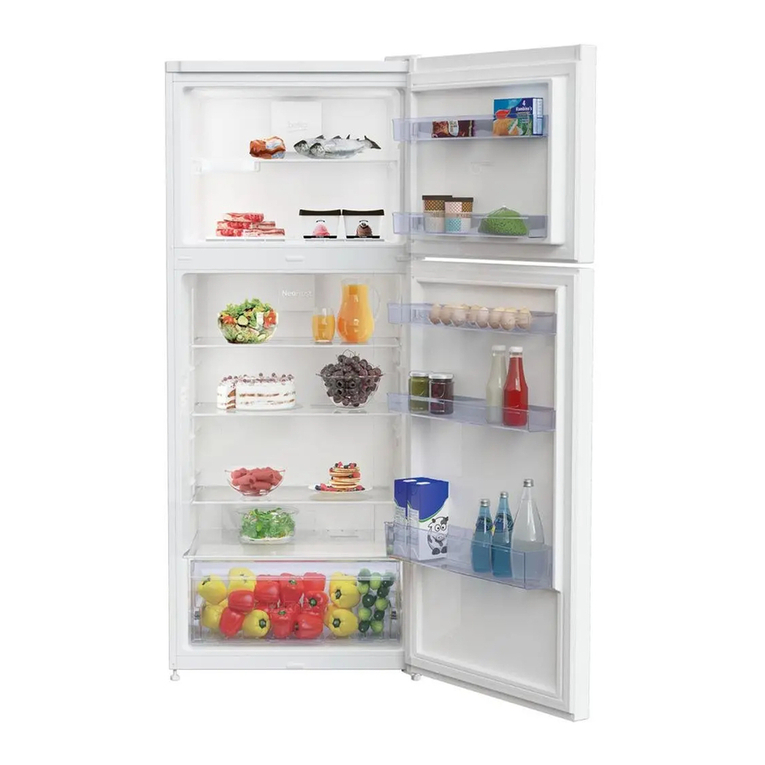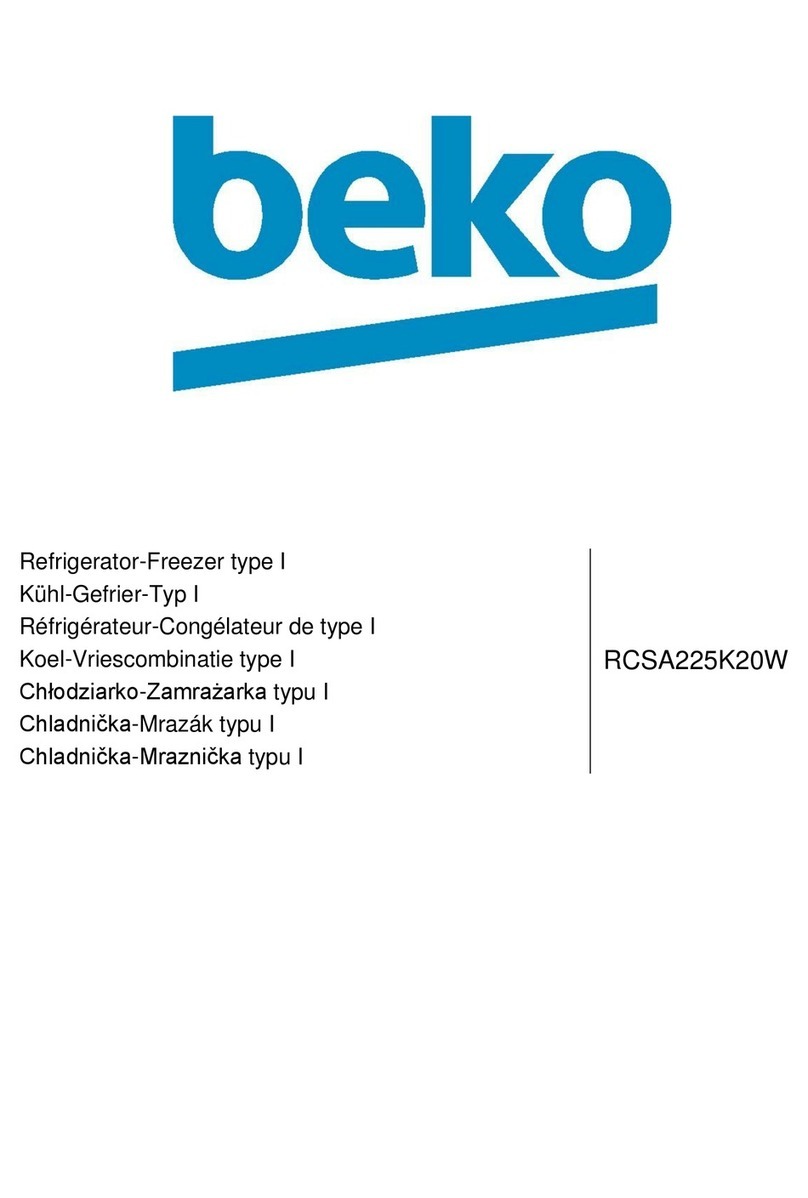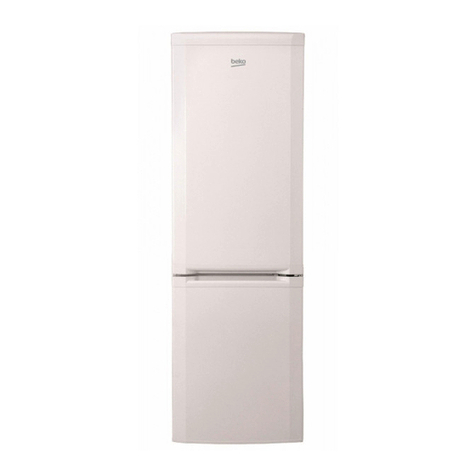
EN
7
– Clean regularly surfaces that can
come in contact with food and
accessible drainage systems.
– Clean water tanks if they have not
been used for 48 h; flush the water
system connected to a water supply
if water has not been drawn for 5
days.
– Store raw meat and fish in suitable
containers in the refrigerator, so that
it is not in contact with or drip onto
other food.
– Two-star frozen-food
compartments are suitable for storing
pre-frozen food, storing or making
icecream and making ice cubes.
– One-, two- and three-star
compartments are not suitable for the
freezing of fresh food.
– If the refrigerating appliance is left
empty for long periods, switch off,
defrost, clean, dry, and leave the door
open to prevent mould developing
within the appliance.
1.1.1 HC Warning
If the product comprises a cooling
avoid damaging the cooling system
and its pipe while using and moving
the product. This gas is flammable. If
the cooling system is damaged, keep
the product away from sources of fire
and ventilate the room immediately.
C
The label on the inner left
side indicates the type of
gas used in the product.
1.1.2 For Models with
Water Dispenser
Pressure for cold water inlet shall
be maximum 90 psi (6.2 bar). If
your water pressure exceeds 80
psi (5.5 bar), use a pressure limiting
valve in your mains system. If you
do not know how to check your
water pressure, ask for the help of a
professional plumber.
If there is risk of water hammer effect
in your installation, always use a water
hammer prevention equipment in
your installation. Consult Professional
plumbers if you are not sure that
there is no water hammer effect in
your installation.
Do not install on the hot water inlet.
Take precautions against of the
risk of freezing of the hoses. Water
temperature operating interval shall
be 33°F (0.6°C) minimum and 100°F
(38°C) maximum.
Use drinking water only.
Intended Use
This product is designed for home
use. It is not intended for commercial
use.
The product should be used to store
food and beverages only.
Do not keep sensitive products
requiring controlled temperatures
(vaccines, heat sensitive medication,
medical supplies, etc.) in the
refrigerator.
The manufacturer assumes no
responsibility for any damage due to
misuse or mishandling.
Original spare parts will be provided
for 10 years, following the product
purchasing date.
